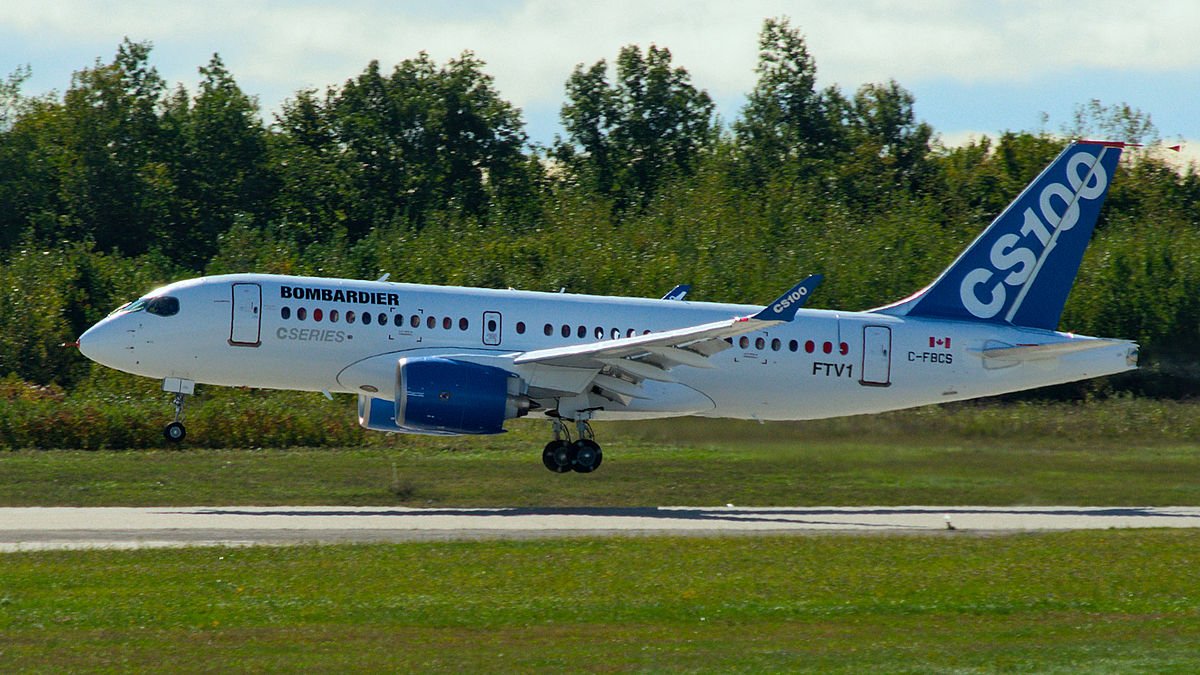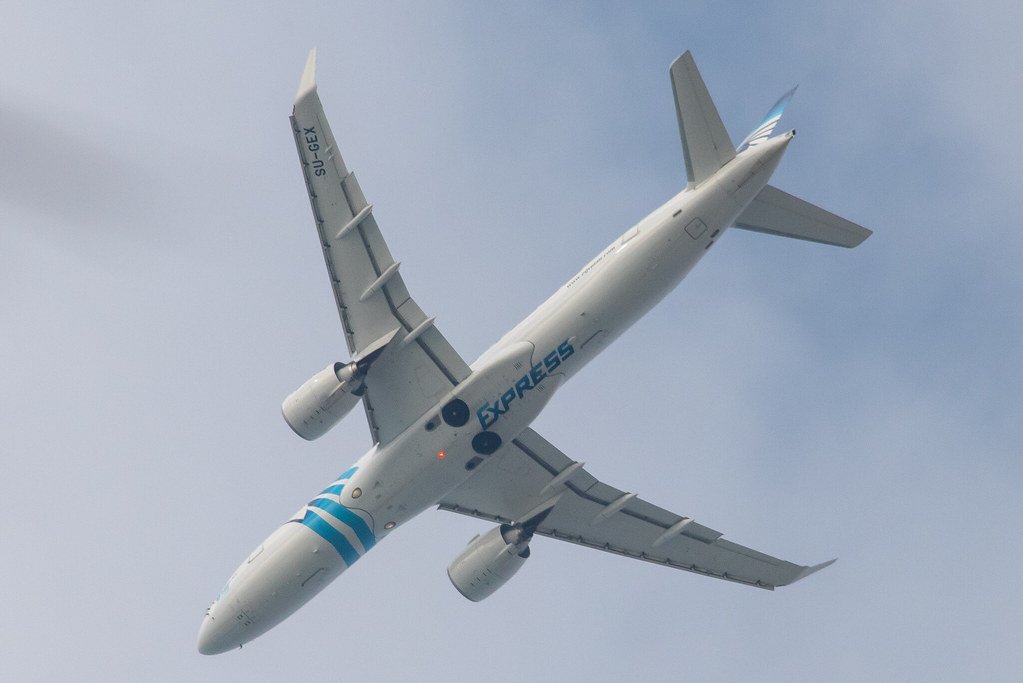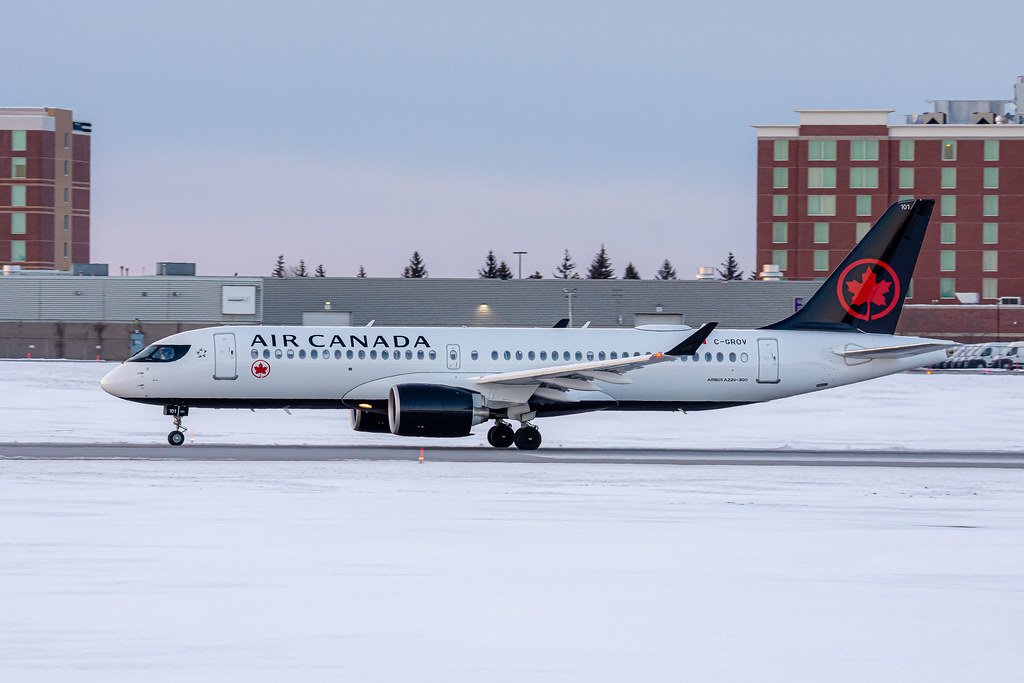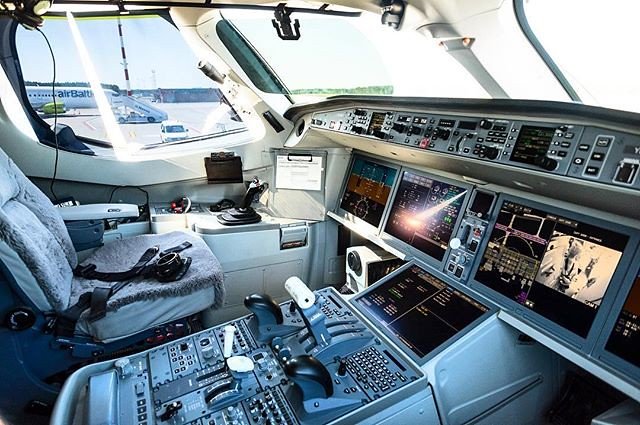
Airbus A220.
ASSEMBLY
SPECS
INTERIOR
HISTORY
ORDERS
One could be forgiven for wondering where the Airbus A220 suddenly came from, the A220, from. Normally new aircraft models are years in the planning, designing, and marketing. We normally read or hear about them as their progress toward commercial service comes closer.
The Airbus A220 is obviously a departure from the normal naming convention adopted by Airbus since their first success story the A300. So where did the A220 come from?
The story of the A220 starts in Canada back in the early 1990s. Bombardier Inc., which started its life out as a producer of snowmobiles, but was by this time a producer of regional airliners, business jets, and mass transportation equipment, saw a place in the market for a larger jet than its current CRJ (Canadair Regional Jet) offering.
Around this time, Dutch aircraft manufacturer Fokker was in financial trouble and Bombardier began an investigation into the possibility of an acquisition of Fokker on 05 February 1996 with a view to gaining access to Fokkers' F-100. By 27 February of the same year, Bombardier determined it was not in their interests to proceed with the acquisition and on 15 March 1996 Fokker went bankrupt.
Deciding to go it alone, Bombardier on 08 September 1998 launched the BRJ-X project. BRJ-X which stood for Bombardier Regional Jet Expansion was to be an aircraft that fitted between the CRJ and the smallest of the bigger jets. The bigger jets were namely, the 2x3 seat configuration jets such as DC9 / MD80 / Boeing 717 and 3x3 seat configuration jets such as the Airbus A318 / Boeing 737-500 / 737-600.
The BRJ-X would have under-wing engine pods as opposed to the CRJ which has rear fuselage-mounted engines. Seating for the BRJ-X would be in the 85-100 range and the project would launch in 2003.
The Airbus A220 was a product of Canadian company Bombardier and started its life as a C Series jet.
By the end of 2000, however, Bombardier had all but shelved the BRJ-X plan in favour of stretching the CRJ-700 to the CRJ-900. At the same time, Airbus had launched the Airbus A318, the smallest member of the A320 family, Boeing had launched the 737-600NG and Embraer of Brazil had launched their E-Jet series.
On 08 March 2004, Bombardier began a new feasibility study into the C Series jet. There would be two variants, one for a 110-115 seat aircraft and the other for 130-135 seats. The range would be around 3,200 nautical miles(NM) and the seat configuration would be 2x3, that is two seats on one side of the aisle and 3 on the other. The C Series aimed to replace the aging DC9 / MD80, Fokker 100, Boeing 737 Classic and BAe 146.
It would feature a cabin with enough headroom to stand up, side stick flight controls and fly-by-wire technology. As was becoming the norm in those days, 20% of the materials would be composite, with the advantage of lighter weight yet high strength. The plan was for a first flight in 2008 and entry into commercial service in 2010.
In May 2005, the development of the C Series jet was estimated to be US$2.1 Billion. The main investors were the Government of Canada, the Government of Québec and the Government of the United Kingdom.
The last may seem a little strange until you realise that part of the Government of the United Kingdom deal was that the wings, engine nacelles and the composite parts of the empennage would be manufactured in Belfast, Northern Ireland. This wasn't too much of a stretch as Bombardier already owned a factory in Belfast which they acquired when they bought Shorts Brothers in 1989.
Final Assembly – Mirabel, Montreal, Québec.
Wings – Belfast, Northern Ireland.
Aft fuselage and cockpit – St. Laurent, Québec.
Main Fuselage – China Aviation Industry Corporate (AVIC)'s affiliate Shenyang Aircraft Corporate.
ASSEMBLY
SPECIFICATIONS
A220 Specs Table
| Airbus A220 Specs | Airbus A220 100 | Airbus A220 300 |
|---|---|---|
| Flight Crew |
2 | |
| Range | 5,460 Kilometres / 2,950 Nautical Miles |
5,920 Kilometres / 3,197 Nautical Miles |
| Competes against | Embraer E-Jets |
Embraer E-Jets |
| Typical/Max Seating | 116 / 135 |
141 / 160 |
| Fuselage Length | 35 Metres / 114 Feet 9 Inches |
38.7 Metres / 126 Feet 11 Inches |
| Cabin Length | 23.7 Metres / 77 Feet 10 Inches |
27.5 Metres / 90 Feet 3 Inches |
| Max Cabin Width |
3.28 Metres / 10 Feet 9 Inches |
|
| Fuselage Max Diameter | 3.7 Metres / 12 Feet 2 Inches |
|
| Wing Span | 35.1 Metres / 115 Feet 1 Inches |
|
| Tail Height | 11.5 Metres / 37 Feet 8 Inches |
|
| Freight / Cargo Volume |
20.5 Cubic Metres / 724 Cubic Feet |
28 Cubic Metres / 989 Cubic Feet |
| Max. Mach Number (MMO) | MMO .82 | |
| Max. Ramp Weight | 61.24 Tonnes / 135,011 Pounds | 68.04 Tonnes / 150,003 Pounds |
| Max. Take-off Weight | 60.8 Tonnes / 134,041 Pounds | 67.6 Tonnes / 149,032 Pounds |
| Max. Landing Weight | 52.4 Tonnes / 115,522 Pounds | 58.74 Tonnes / 129,500 Pounds |
| Max. Zero Fuel Weight | 50.3 Tonnes / 110,892 Pounds | 55.8 Tonnes / 123,018 Pounds |
| Max Fuel Capacity | 21,918 Litres / 5,790 U.S. Gallons | |
| Ceiling | 41,000 Feet / 12,497 Metres | |
| Engines | 2 x Pratt and Whitney PW1500G | |
| Per Engine Thrust | 23,3000 lbf / 103.6 kN | |
| Date | Event |
|---|---|
| 31 Jan '06 | Bombardier announced that the current market did not warrant a launch of this magnitude and company focus would be redirected. A small team was left to continue working the business case. |
| 31 Jan '07 |
Bombardier announced that work would once again begin on the C Series. |
| Nov '07 | Bombardier chose the Pratt and Whitney geared turbo fan PW1000G rated at 23,000lb (102kN) for the C Series. |
| 22 Feb '08 | Bombardier's board authorised formal sales proposals of the C Series. It would be sold as having a 20% improved fuel burn and 15% better cash operating costs than current offerings on the market. Qatar, Lufthansa and ILFC expressed their interest. |
| 13 Jul '08 | A press conference was held on the eve of the Farnborough Air Show to launch the C Series and an order for 60 aircraft with options for 30 more was received from Lufthansa. The list price was US$46.7M. Assembly would be as follows:
|
| Mar '09 | Bombardier changed the aircraft designation from C110 to CS100 and C130 to CS300. There were to be some extra options for the CS300, namely the XT for Extra thrust and ER for Extended Range. These options were dropped with the ER configuration becoming the standard offering for the CS300. |
| 07 Mar '13 | The first almost completed airframe was put on display. |
| 30 Aug '13 | Transport Canada gives a approval for high speed taxi testing. |
| 16 Sep '13 | Maiden flight of the CS100 from Montreal's Mirabel Airport. |
| 29 May '14 | Uncontained engine failure suspends further testing until the cause and resolution are found. This caused Bombardier to miss Farnborough 2014 which was critical for show casing the new aircraft. |
| 07 Sep '14 | Flight testing resumed once a lubrication problem had been found and corrected in the engines. |
| 20 Feb '15 | CS100 test aircraft completed 1,000 test flying hours. |
| 27 Feb '15 | The CS300 makes its maiden flight from Montreal's Mirabel Airport. Initial findings were that the aircraft exceeded expectations on noise, performance, economic guarantees and possibly even a greater than expected range. |
| Jun '15 | At the Paris Air Show Bombardier released updated specs which showed many improvements over the original specs. |
| Nov '15 | All certification tests for the CS100 were completed. |
| 25 Nov '15 | First phase of route testing is completed with the CS100 achieving 100% dispatch reliability. |
| 18 Dec '15 | Transport Canada awards type certification for the Bombardier CS100. |
| Jun '15 | Type certification is awarded by the F.A.A. and E.A.S.A. for the CS100. |
| 29 Jun 16 | In a handover ceremony at Montreal's Mirabel Airport, Swiss Global Airlines received their first Bombardier CS100. |
| 11 Jul '16 | Transport Canada awards type certification for the CS300. |
| 15 Jul '16 | Swiss commence their first commercial service with the CS100 from Zurich to Paris. |
| 23 Nov '16 | Transport Canada and E.A.S.A. award common rated certification to both the CS100 and CS300. This means that pilots qualified on one are also qualified on the other which saves airlines a lot of extra pilot training hours. |
| 28 Nov '16 | The first CS300 is delivered to Air Baltic. |
| 14 Dec '16 | The CS300 receives type certification from the F.A.A.. |
| 14 Dec '16 | Air Baltic perform the first commercial service with the CS300 from Riga to Amsterdam. |
| Mar '17 | Steep landing approach tests (5.5 degrees) were conducted by the CS100 at London City Airport (LCY). The CS100 was the largest aircraft to have landed at LCY. |
| Apr '17 | Transport Canada and E.A.S.A. awarded certification to the CS100 for steep approaches. |
| 08 Aug '17 | Swiss fly the first commercial service of a CS100 from Zurich to London City Airport, taking advantage of the newly acquired steep approach certification. |
| 16 Oct '17 | Bombardier form a partnership around the C Series programme. The shareholding is Airbus 50.1%, Bombardier 31% and Investissement Québec 19%. |
| 01 Jul '18 | Bombardier and Airbus announce that Airbus will have majority stake-holding in the partnership. |
| 10 Jul '18 | The C Series jets were renamed to be in line with Airbus's offerings. The CS100 was renamed to be the A220-100 and the CS300 became the A220-300. |
| 20 May '20 | The Airbus factory at Mobile, Alabama starts production of the first US built A220 for Jetblue. |
History.
When the C Series was launched by Bombardier, they estimated that the target market, the 100-149 seat market, would account for 6,300 units over 20 years. This translates to an estimated value of US$250B. Bombardier's business case saw them capturing half of that.
Airbus's buy into the partnership would indicate that they agree with this estimate and see a profitable future for the A220. Their main competition, of course, is Brazilian aircraft maker Embraer with their E-Jet series. It will be interesting to see how competition fares between the two.
Egypt Air Express Airbus A220-300 SU-GEX at Abu Dhabi shows off the wing configuration nicely.
Air Canada Airbus A220-300 C-GRAV
airBaltic Airbus A220-300
The cabin was designed to be attractive to the traveller, with broader seats and armrests for the centre seat. The windows were also larger than normal so that natural light would be available to all. Things looked all set to go, but there were still some ups and downs ahead
Cabin Interior.
Delta Airbus A220 Cabin showing the 2x3 5 across configuration in economy. The larger windows make for a light and airy feeling cabin.
Delta Airbus A220 first class cabin with a configuration of 2x2
The Airbus A220 cockpit is state of the art with a heavy use of glass displays. Following the Airbus tradition, control is via a sidestick as opposed to the control column.
Orders and Deliveries.
Correct as at end of November 2022.
Airline Customers of the A220.
| Airline / Customer | Country | A220-100 | A220-300 | ||||
|---|---|---|---|---|---|---|---|
| Totals | 96 | 56 | 56 | 698 | 182 | 182 | |
| Ord | Del | Opr | Ord | Del | Opr | ||
| Governments, Executive and Private Jets | Various | 8 | 2 | 2 | 2 | ||
| Air Austral | France | 3 | 3 | 3 | |||
| AirBaltic | Latvia | 50 | 38 | 38 | |||
| Air Canada | Canada | 60 | 31 | 31 | |||
| Air France | France | 60 | 15 | 15 | |||
| Air Lease Corporation | United States | 7 | 68 | 4 | |||
| Air Manas | Kyrgyzstan | 1 | |||||
| Air Senegal | Senegal | 1 | |||||
| Air Tanzania | Tanzania, United Republic of | 4 | 4 | 4 | |||
| Air Vanuatu | Vanuatu | 2 | 1 | ||||
| Aviation Capital Group | United States | 20 | |||||
| Azorra Aviation | United States | 22 | |||||
| Breeze Airways | United States | 80 | 10 | 10 | |||
| Carlyle Aviation Partners | United States | 1 | 1 | ||||
| Croatia Airlines | Croatia | 6 | |||||
| Delta Air Lines | United States | 45 | 45 | 45 | 62 | 13 | 13 |
| Egyptair | Egypt | 12 | 12 | 12 | |||
| GTLK | Russian Federation | 6 | 6 | ||||
| Ibom Air | Nigeria | 10 | |||||
| Ilyushin Finance Co. | Russian Federation | 14 | |||||
| Iraqi Airways | Iraq | 5 | 2 | 2 | |||
| ITA Airways | Italy | 7 | 4 | ||||
| Jetblue Airways | United States | 100 | 12 | 12 | |||
| Korean Air | Korea, Republic of | 10 | 10 | 10 | |||
| Lease Corporation International | Ireland | 3 | 17 | ||||
| Macquarie Financial Holdings PTY Limited | Australia | 28 | |||||
| Nordic Aviation Capital | Denmark | 5 | 15 | ||||
| Odyssey Airlines | United Kingdom | 10 | |||||
| QANTAS Airways | Australia | 20 | |||||
| Swiss | Switzerland | 9 | 9 | 9 | 21 | 21 | 21 |
| Undisclosed | 1 | 5 | |||||

















